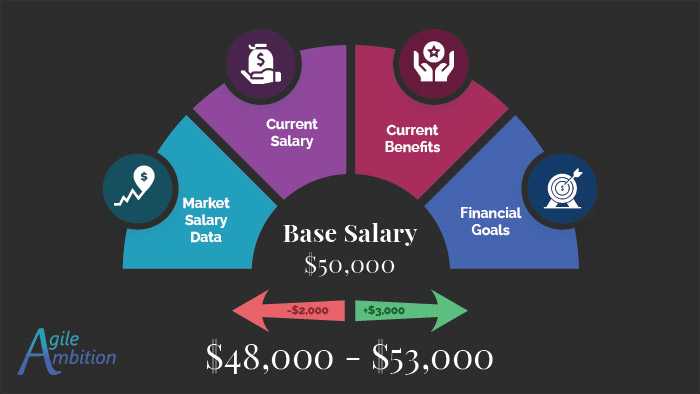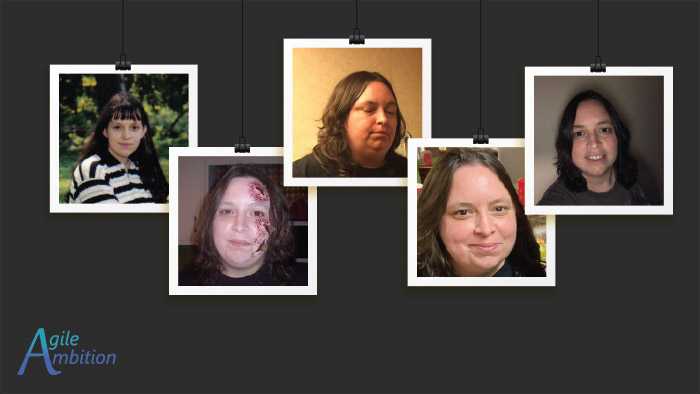The Hunt: My Scrum Master Job Search

Do you have a new job in your sights? These tips will help you in your Scrum Master job search.
Find a Resume Builder
Throughout my career, I’ve spent countless hours futzing around with resume formatting. Bullet points go astray, words wrap where they shouldn’t, and parallel dates appear askew. If you should find a typo - perish the thought - the formatting collapses like a house of cards. One minuscule correction and my choreographed phrases deteriorate into chaos.
While researching resume creation tips, serendipity struck in the form of an online resume creator. Armed with this gem, I can focus on the language and offload the burden of formatting.
There seems to be no shortage of resume builders. You may not like the one I chose, but I encourage you to find one that suits your taste and quit wasting time on resume design.
Know Your Target Salary Range
Generally speaking, people expect a pay increase when starting a new position. I’m thankful that I ascertained my target salary range early in my Scrum Master job search. Having this range readily at hand came in handy several times throughout my job search.
My first step in determining my target salary range was to do some online research. Sites like PayScale.com or Salary.com will allowed me to browse salaries based on various criteria.
I also considered my current salary, current benefits, and financial goals. Taking all this information into account, I derived a base income that felt rational. I used this starting number to compute a five thousand dollar range. I calculated the top end by adding three thousand to my original number and the bottom by subtracting two thousand.

Armed with this range, I could respond to recruiters’ salary questions without that awkward pause. When job applications asked about my salary requirements, I used the top end of the range.
Salary negotiations are not my forte. My grandmother is the master haggler in our family. When the director gave her the total for my grandfather’s funeral service, she placed cash on the table between them. The amount she provided was eight hundred less than he’d quoted. “Take it or leave it” were her parting words as she left the room. I, unfortunately, did not inherit these genes.
I instead tend to follow the wisdom my realtor once imparted upon me. Don’t be greedy. If you know what you need, and you get that, take it.
I tend to avoid salary negotiation games because I recognize I’m not skilled at them. I instead stick to my salary range. If an employer can afford me, we’ve got a deal. If not, we can both move on.
Quantity Over Quality (with High Quality)
Online advice slants toward heavy customization of resumes and cover letters. They will lead you to believe that it’s a game of quality, thus recommending that you focus on enriching your application to stand out.
I propose that it is instead a numbers game. It would be best if I could get my resume to as many potential employers as possible. There is a caveat, though; my application still needs to be a strong contender.
I think about this in a manner similar to my social media cover photos. I have friends that change their pictures every day. They customize images for every holiday or social movement. On the other hand, I like to find one photo I like and leave it up forever. If it’s a good picture today, it will be a good picture tomorrow.
That doesn’t mean that I throw up just any old picture. There is some logic to my selection process. I’m not going to pick my senior portrait because it’s outdated. Although I like my Halloween photos, they can be a bit gory. I’m not going to pick that picture my mom took from the cruise where I had my eyes closed and looked a bit moronic. I’ll go with a reasonably current image that is the most flattering.

My point is, I’m not suggesting that anyone should put up a garbage resume and blast it to countless employers. There is a balance. You can create a result that paints you in the best light without tailoring it to every individual position.
I focus less on standing out and more on putting my best, but true, face forward. This logic is also while you’ll never see me use one of those glamor shots for my cover photo.
Set a Goal
I dragged my feet a bit early on in the process and didn’t prioritize submitting job applications. I wasn’t in dire need of a job. My family wasn’t starving, and the bank wasn’t calling. It was time to move on from my current position, but I wasn’t in a rush.
My irrational competitive nature nudged me into gear after a friend of mine mentioned in passing that they submitted seven applications in one day. My reaction was like the townsfolk when they think the tailor killed seven giants with one blow.
At the time, I was lucky if I applied for three jobs a week. Seven seemed impossible to me. So I set a goal of completing five applications a day which forced me to make my process more efficient.
Without this goal, the odds are good that I’d still be plugging away at my old job instead of starting in my new position.
Don’t Sweat It
The thing that was most detrimental to my Scrum Master job search was my reaction to rejection.
It was pretty typical for a company to respond to let me know they were pursuing other candidates. It was pretty evident that these were canned responses, so I didn’t take these too hard. I assumed something outside my control had lead to the decision. Maybe the applicant tracking system kicked me out because I was missing a key term on my resume. Perhaps they already had someone they liked for the opening, and the job listing had only been a formality. It could be that my salary range was outside what they had budgeted for the job posting.
It did get to me a bit when a company rejected me after the third and final round of interviews. These people had met me and asked me questions, and deemed me unworthy.
As a result, I put my whole job search on hold for a bit. I regret this wasted time. My decision was wimpy, based solely on my bruised ego.

After some time, I reflected on the situation and had a bit of a paradigm shift. I’d been thinking of the job search as if it were a game to win. I wanted these companies to pick me as a winner over the other candidates. Maybe I have more scars from elementary school kickball games than I thought, all those times praying the captains wouldn’t pick me last.
It’s better if I think about it like I’m purchasing a pair of jeans. I have a general idea of what I want, and I grab a couple of pairs to try. Not all jeans fit the same, even if they appear to be the right size. Trying each pain on allows me to evaluate them before committing to buy them.
In all honesty, I dodged a bit of a bullet with the first company that told me I wasn’t a good fit. My response in the final interview highlighted a fundamental difference in the way I approach deadlines. This difference would have conflicted with the way they ran their business. I’m thankful that their leadership was able to recognize that incongruity. No one wants to be walking around for the next year, jerking their pants up, or being self-conscious about their muffin top. They saved me from an equivalent fate.
Now I look at interviews as learning opportunities. Interviews are a chance to improve my interview skills and make sure the company meets my expectations. This new insight led me to develop a set of questions that help highlight potential red flags.
Consider a WIP Limit
Once I got over my fear of rejection and ironed out the inefficiencies in my process, it was a breeze to complete five applications a day. But I did not foresee the barrage of interviews that were coming as a result of my efforts.

When it comes time to engage in my next job search, I plan to instate a WIP limit. I’ll apply for my target number of jobs a day only if my total active applications are below a certain threshold. Let’s say twenty for the sake of illustration.
If I have twenty active applications, I won’t submit anymore. There are several ways an application might become inactive: It ages beyond two weeks with no response The company rejects my application I decide not to pursue the position for some reason Each time an application drops off the active list, I’ll apply for a new position to maintain my previously established threshold.
I can’t say for sure that twenty is the suitable threshold, but it’s not an unreasonable starting place to limit the onslaught of interviews.
Automate your Cover Letter
Cover letters were the bain of my existence when I first started my job search. Developing custom cover letters was by far the most inefficient part of my process.
I solved this problem using a tactic to make cover letters less painful.

Just in Time Research
Another opportunity to cut waste from my scrum master job search targeted company research.
There is about an 8% chance that you’ll get a job from a single application. This statistic indicates that, on average, you wouldn’t receive an interview until your 13th application. The other twelve companies will reject (or ignore) you without ever speaking with you. Therefore, any work you do to learn anything about these companies is a waste.
When I researched a company too early, I also found that I’d often get my hopes up. This inflated interest in the position made it more challenging to deal with rejection.
I decided to avoid any company research before landing an interview. I applied for any Scrum Master position that didn’t raise any obvious red flags during a cursory review of the job listing. This was different than my original approach. Instead of building an affinity with the company before I deemed them worthy of an application, I left the screening to them. If they never contacted me again, I’d only wasted fifteen minutes on the application and not hours.
Paper Trail
I’d submitted fifty-six applications before being overrun with requests for interviews.
It becomes challenging to keep all the information straight. It may take weeks for an employer to reach out, and by that time, you’ve forgotten the details of the position. At this point, if all you have is a link to the job listing, odds are it will have already expired.
Tracking my applications using a plain old spreadsheet was a lifesaver. I noted the company name, position title, application date, last correspondence date, and status. I saved a copy of the job listing as a PDF and associated it with a row on my sheet for easy recall.
I also noted any activity with the application in my spreadsheet. This way, I had a running history of what had transpired to date. This information became invaluable for keeping things straight during the interviews.
Works Consulted
- Five Questions to Ask your Interviewer
- Avoiding Nightmare Cover Letters
- How Many Applications Does it Take to Get a Job?
TLDR
Don’t allow your dream job to abscond. Use these tips to imporve your Scrum Master job search. Happy hunting!
Share
Table Of Contents
Fuel an Idea
Every week, I break down complex ideas, strip away the fluff, and give you experiments to turn knowledge into skills.
If that’s worth a coffee, consider fueling the next big insight.
No pressure. No guilt trips. Just impact.
Buy Me a CoffeeRelated Posts
Quick Links
Legal Stuff

